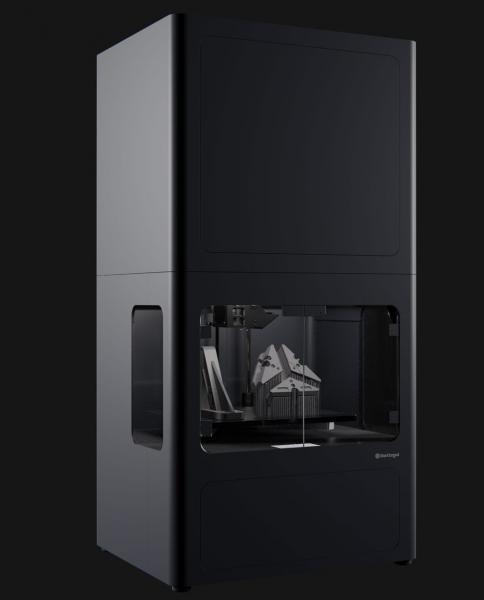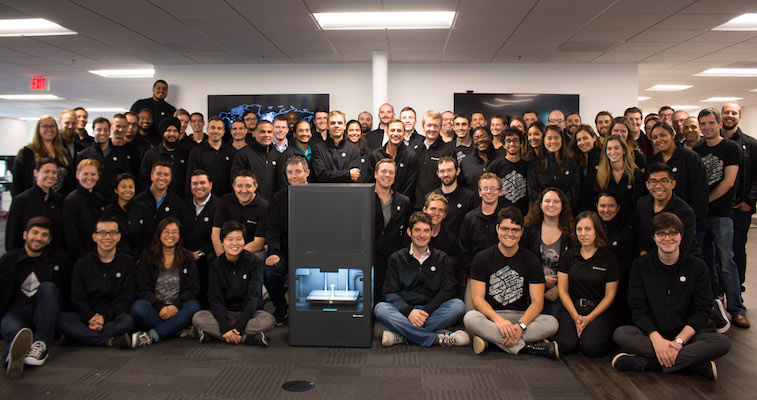In the late 1990s, while still in high school, Markforged Founder and CEO Greg Mark had a job like many other high school students—he was repairing bicycle frames.
He found out about an internship for a company called Outback Bicycles. It was a standard, three-month internship where you would sweep the floors, do some light machining, and then at the end of your three months, you would get to build a bicycle frame to keep and ride. However, like most internships, this was intended for college students—which Mark was not. This did not deter him.
He drove down to their office and said, “Hey! I want to do this internship.”
“No,” they replied.
He came back a few days later and asked again.
“No,” they replied once again.
He persisted and persisted until one day, Outback gave him a chance; he would spend two weeks learning the ropes. It wasn’t necessarily a formal internship, but it was close. Unfortunately, things did not start as planned.
“On my first day, I screwed two things up. I drilled a water bottle bolt hole in the wrong place, and I stamped the wrong serial number on the bottom. I was nervous, they yelled at me, they forgave me, they let me come back, and then the next thirteen days were great,” Mark said.
By the end of it, Outback was happy with him, and Mark came on as a fabricator for his senior year in high school. He learned machining, welding, cutting, and aligning. “By the time I graduated high school, I was making custom bicycle frames for $20/hour. Which, for a high school senior, was awesome.”
This was the catalyst for Mark’s love of engineering and, by extension, the 3D printing company he would found many years later: Markforged.
The Contract That Changed Everything

After high school, Mark studied aeronautics and astronautics at MIT, where he got his master’s. This led to a position at Tribotek—the electrical distribution company—as well as the founding of his first startup, Aeromotions, which manufactures aerodynamic wings for race cars. After he left his company in 2011, he became CEO of Genasun, which develops off-grid solar charge components and advanced lithium battery systems.
While at Genasun, the company was in talks to get a contract with the U.S. Navy (the world’s largest customer of off-grid technology is the U.S. Military).
“We showed our tech to the Marine Corps. They loved it, and said, ‘This is great, but Marines don't wire things together. We plug them in.’ So they describe this box that they wanted to enclose the electronics in, with these connectors to charge the batteries with solar power,” Mark recalled. Note that this was on a Friday.
The CEO went back to Boston that day to see his friend, who just got a low-cost 3D printer. “This project would be perfect for it,” Mark thought, so he, with his friend’s guidance, designed the Navy hardware to specification and printed it.
“It blew my mind that we could take a CAD file we had and go layer by layer, build the part, and then have a real thing we can actually use. It took me longer to paint and sand it than it took to print,” he said. “We shipped it out to the Marine Corps on Wednesday, and they got it Friday. Literally a week after they told me what they wanted, they had a functional prototype in their hands, and we got a nice contract out of it.”
Mark explained that the only difference between his Navy prototype and the end-use version is that “plastic is weak.”
Coincidentally, when this happened, Mark was also thinking about doing something different; he wanted to start a new company to call his own. The initial idea was a competitor to Dropbox, but this was quickly scrapped due to concerns of scalability. The other idea he kept coming back to was 3D printing.
“What if I could make a carbon fiber 3D printer?” he thought. “What if I could make real end-use parts?” He made some prototypes, decided he was on the right track, and got an initial round of funding. In 2013, Markforged was born.
High-Strength 3D Printing
Today, Markforged offers a platform for 3D printing, as well as a range of 3D printers for industrial uses. However, unlike many companies that work solely in plastic, Markforged printers can print carbon fiber, stainless steel, fiberglass, and titanium, as well as plastics and other materials. Their products are used by Google, Ford, NASA, Amazon, and many others to make same-day prototypes and strong end-use parts.
“Most people in 3D printing are doing something that somebody else has already done, and they're either doing another version of it or a lower-cost version of it. No one printed carbon fiber before we did.”

Even with a team of skilled engineers, Mark called the process of developing such a printer “extremely difficult,” but added that it paid off. The company discovered that they could further expand that technology into metal—without much difference in the printing process.
“When we go to trade shows, people tell us that our metal parts look so good. We show them a metal part and a carbon fiber part, and we say, ‘This plastic is loaded with metal, and this plastic is loaded with carbon fiber, and the machine can’t tell the difference.’ They are amazed.” The company plans to develop the metals side of the business even further, and sees it as the company’s key area for growth.
“You should think of us as a profitable, quick-growing composite 3D printing company that has a metal shop startup tacked on to it.”
“Quick-growing” is right. In its nearly five years on the market, Markforged has sold its products and services to 75 percent of the aerospace companies in the world, including “small ones you've never heard of,” the CEO claims. And if your company is in automotive, “you have plural of our printers,” he added. Mark said that the company’s sales are going up 300 percent year-over-year, and their organic expansion rate is at 34 percent.
And that’s not all. This past November, in an effort to put their foot on the gas pedal, the Watertown-based company raised $30M in a Series C led by Siemens VC company next47. Not only were they the first VC investment for next47, but they were also the first investment by another backer: Porsche. Both companies were already using Markforged printers.
Five years of significant growth and profit later, it’s hard to look at Markforged as a scrappy company that’s still in the process of making a name for itself. It’s safe to say they’re past that stage, and Mark agrees.
“We're not a startup anymore.”
Alexander Culafi is a Staff Writer for VentureFizz. You can follow him on Twitter @culafia.
Images provided by Markforged. Metal X image from Twitter.

